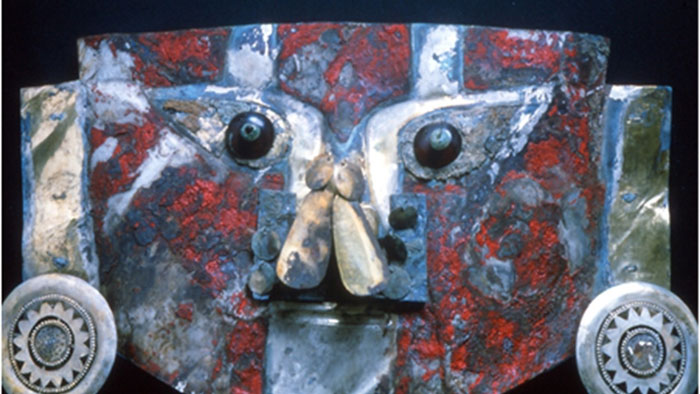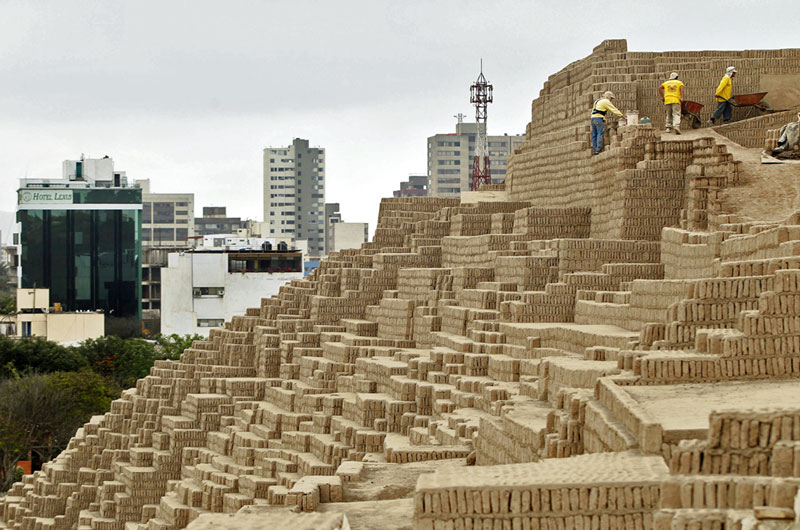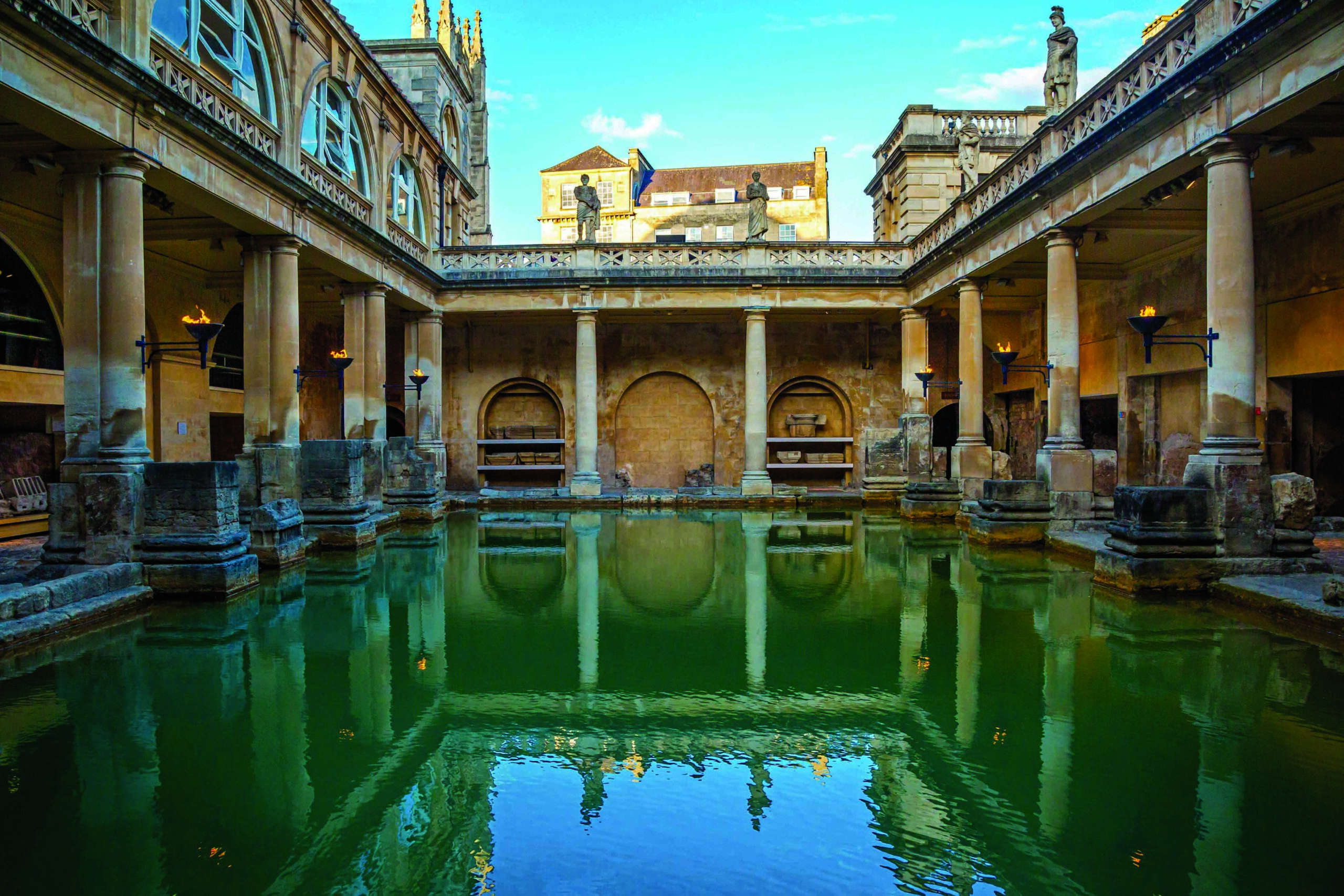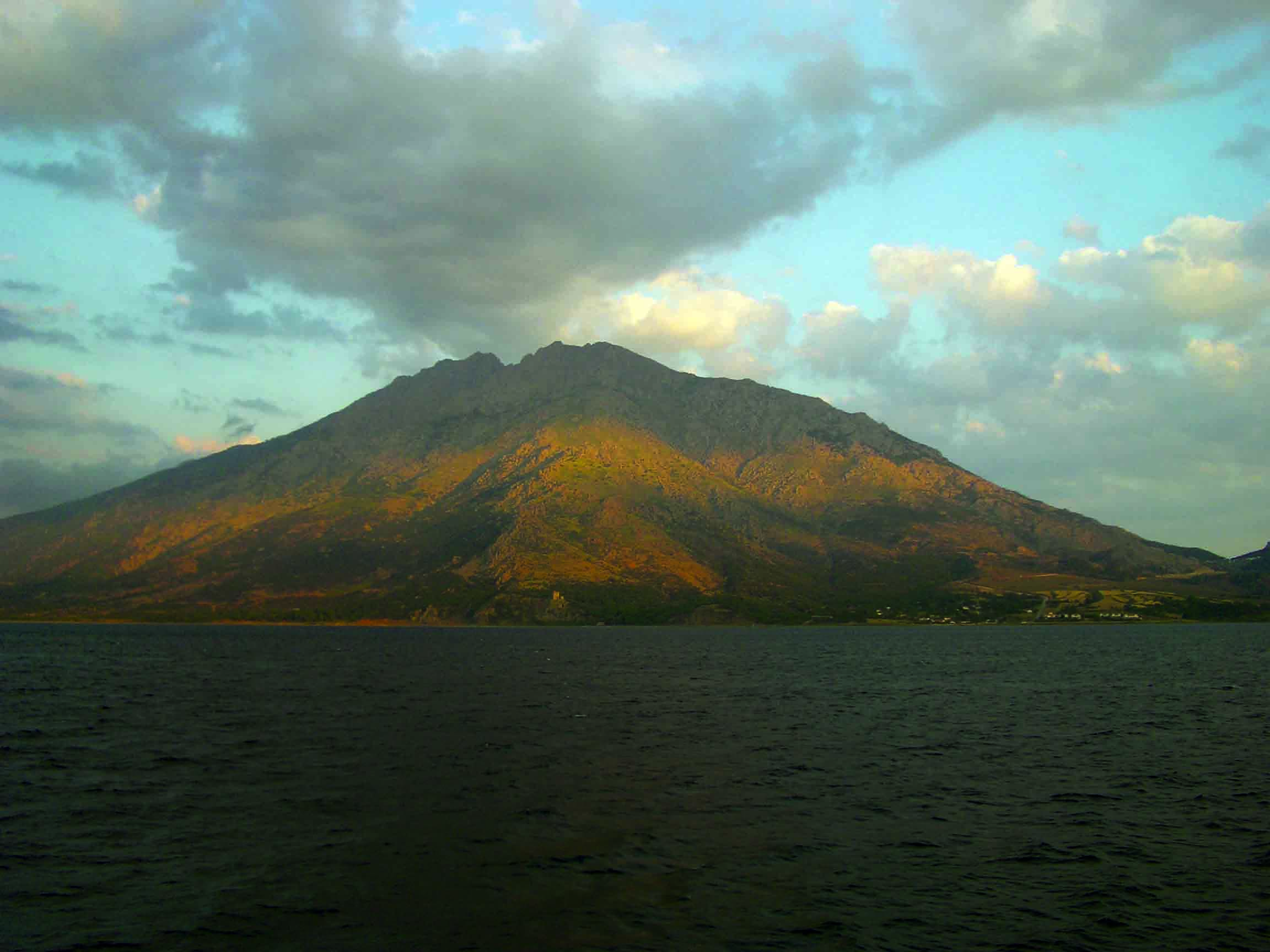
WASHINGTON, D.C.—According to a statement released by the American Chemical Society, the red paint on human remains and a gold mask discovered in a 1,000-year-old Sicán tomb in Peru contains human blood and egg whites. Some 30 years ago, the tomb was excavated by archaeologists led by Izumi Shimada, who found the skeletal remains of a man between the ages of 40 and 50 at the time of death. He had been seated and placed upside down in the center of the tomb chamber. The gold mask covered his detached skull. At the time of discovery, the red pigment on the skeleton and the mask was thought to be cinnabar. Luciana de Costa Carvalho, James McCullagh, and their colleagues recently analyzed a sample of the paint in order to identify its long-lasting binding material with transform-infrared spectroscopy, which identified the presence of proteins. Further analysis with tandem mass spectrometry identified six proteins from human blood and ovalbumin, which comes from egg whites. The egg proteins were too degraded to identify the exact species of bird, but the researchers suspect the eggs came from the Muscovy duck. The researchers think the blood in the paint may be related to the desire for the rebirth of a deceased leader, since the tomb also contained the remains of two young women arranged in birthing and midwife poses, and two crouching children’s skeletons. To read about hundreds of burials of children and llamas unearthed at the coastal site of Pampa la Cruz, go to "Peruvian Mass Sacrifice," one of ARCHAEOLOGY's Top 10 Discoveries of 2019.










